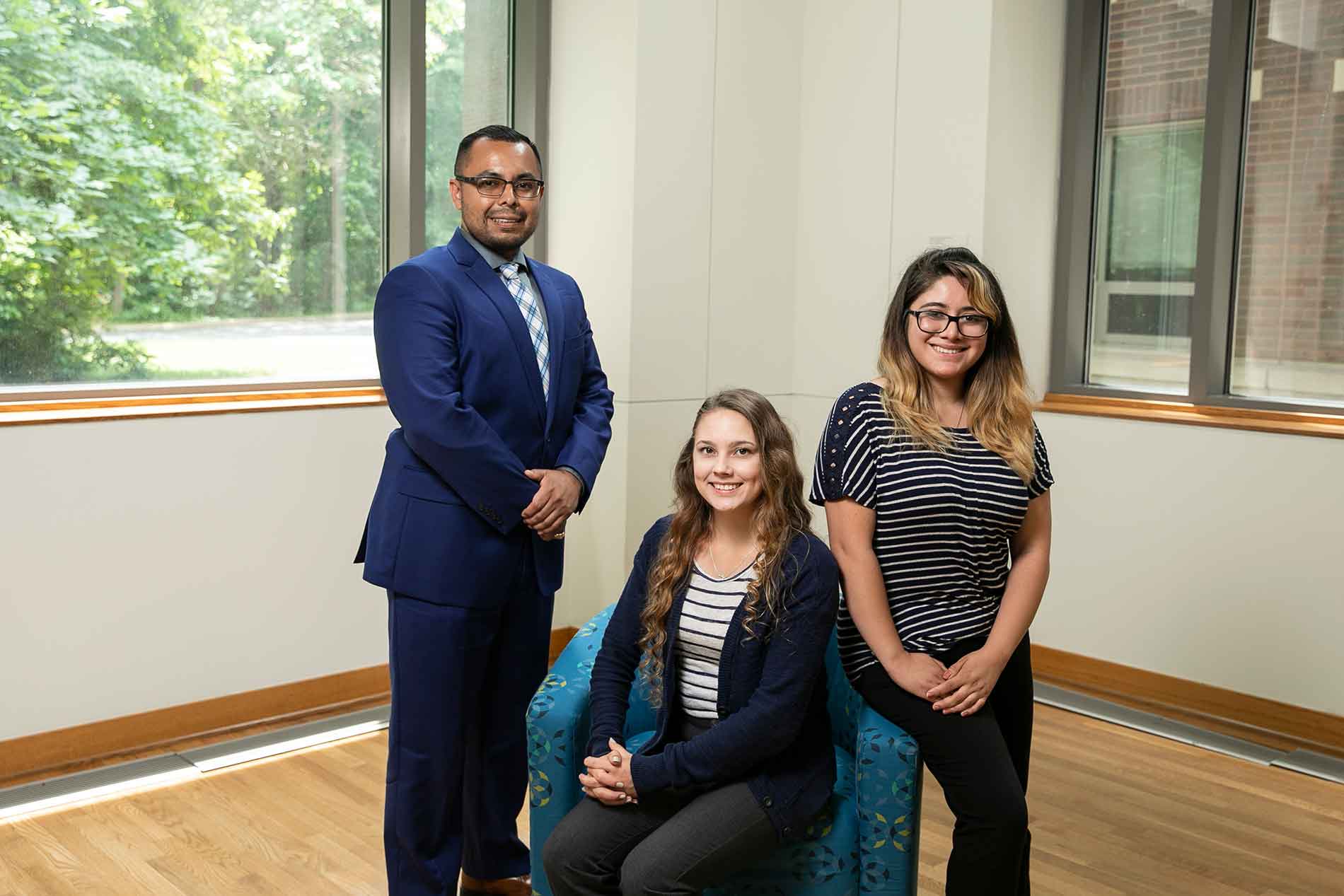Meet Omar Camarillo, Ph.D., Xandra James and Cecilia Torres
Faculty-student team conducts social media analysis on public perceptions of cartels, gangs with the CINA Center of Excellence
Over a recent summer, a faculty-student research team from Eastern New Mexico University explored the connections between Mexican drug cartels and U.S.-based gangs and how the public perceives these criminal organizations.

Omar Camarillo, Ph.D., a professor of criminal justice and sociology, and students Cecilia Torres and Xandra James conducted this research as part of the U.S. Department of Homeland Security (DHS) Summer Research Team (SRT) Program for Minority Serving Institutions.
The SRT Program is designed to increase scientific leadership at Minority Serving Institutions in DHS research areas. The program provides faculty and student research teams the opportunity to conduct research at university-based DHS Centers of Excellence.
At the DHS Center of Excellence for Criminal Investigations and Network Analysis (CINA) at George Mason University’s Fairfax, Virginia, campus, Camarillo and his students gathered and studied data from Twitter to better understand how the news media, politicians and the general public view the relationship between cartels and gangs.
Under the mentorship of Anthony Stefanidis, Ph.D., CINA Science Committee member and previous center director, the team compiled a dataset of roughly 250,000 tweets related to cartel and gang activity for the year 2018. Using data analysis software, they examined the tweets to determine instances where drug cartels were believed to have collaborated with gangs. They then compared the public’s perceptions with data from scholars and the U.S. Drug Enforcement Administration (DEA).
Through their analysis, the team found that the media, politicians and the public perceive U.S.-based gangs to be working with Mexican drug cartels in various criminal enterprises, such as drug smuggling and human trafficking.
“Our research matters to us because it helps to distinguish myth from reality in order to identify real threats to our communities and nation,” Camarillo said. “This research is important to DHS because it addresses if and how gangs are utilized by drug trafficking organizations, such as for the purpose of cartel enforcers, security for shipments, drug dealers and human smugglers.”
For Torres, the research project illustrated the powerful effect that social media has on shaping the public’s perception on an issue.
“This perception may differ from the reality, suggesting that the more something is shared, the more it is believed, regardless of whether it is accurate,” she said. “This can have such a significant impact on politics and policy.”
Another facet to the team’s research dealt with “spillover violence.” Currently, the U.S. government uses the term to refer to deliberate attacks by the cartels on U.S. assets, including American law enforcement and citizens. Through their social media analysis, Camarillo and his students explored the idea that the definition of spillover violence should be expanded to include cartel-related incidents involving U.S.-based gangs.
At the conclusion of the 10-week program, Camarillo and his students presented their research findings to DHS leaders at the DHS Centers of Excellence Summit.
Through her participation in the program, Torres, a double major in criminal justice and forensic science, gained valuable research experience.
“It was incredibly beneficial to learn how to conduct research with a team, interpret results and communicate findings,” she said. “After completing this project, I am much more comfortable presenting research to a large group.”
The program also opened her eyes to a variety of career options in her field.
“I now know how much I love doing research and hope to do so in my future career,” Torres said. “I am also hoping to pursue a career within a federal agency.”
Camarillo’s experience in the program solidified his passion for mentoring students and getting them involved in academic research. It also allowed him to form connections with fellow researchers and DHS personnel.
“I would definitely encourage other faculty to apply in order to provide their students a hands-on approach to research and collaboration with the federal government,” he said. “It is a very rewarding experience to see personal and academic growth in your students.”
The DHS SRT Program is funded by DHS and administered through the U.S. Department of Energy (DOE)’s Oak Ridge Institute for Science and Education (ORISE). ORISE is managed for DOE by ORAU.
